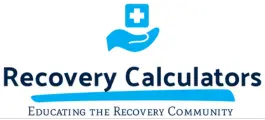Alcohol withdrawal can be a challenging and dangerous process. For those who are dependent on alcohol, stopping or reducing intake can lead to severe physical and psychological symptoms. This is where the CIWA (Clinical Institute Withdrawal Assessment for Alcohol) comes into play. CIWA is a valuable tool used by healthcare professionals to measure and manage these withdrawal symptoms.
Understanding CIWA and Its Importance
The Clinical Institute Withdrawal Assessment for Alcohol (CIWA) is a vital tool used by medical professionals to monitor and manage alcohol withdrawal symptoms. This assessment helps ensure the safety and comfort of individuals undergoing detoxification from alcohol. Given how alcohol withdrawal can lead to severe complications such as seizures or delirium tremens, CIWA is essential in predicting and preventing these risks.
CIWA is not just a simple checklist; it is a comprehensive scoring system that assesses various physical and psychological symptoms of alcohol withdrawal. Each symptom is rated on a scale of 0 to 7 based on its severity, with the total score guiding the treatment approach. A higher score signifies more intense withdrawal symptoms and indicates a need for more intensive medical intervention.
The significance of CIWA lies in its structured approach to monitoring withdrawal. By providing a clear, systematic way to evaluate symptoms, CIWA helps ensure that individuals receive timely and appropriate care. This tool is particularly useful in both luxury and traditional alcohol rehabs, where the goal is to manage withdrawal symptoms effectively to pave the way for long-term recovery. Accurate use of CIWA can make a substantial difference in the overall outcome of the detox process, emphasizing its importance in alcohol rehabilitation settings.
How to Administer the CIWA Assessment
Administering the CIWA assessment involves a series of steps that must be conducted methodically to ensure accurate results. The process begins with a thorough evaluation of the patient’s symptoms, both physical and psychological. Each symptom is scored based on its severity, and the total score then guides the treatment plan.
Here are the key steps in administering the CIWA assessment:
- Initial Evaluation: Start by conducting an initial evaluation upon the patient’s entry into the detox program. This includes a detailed history of alcohol use and any previous withdrawal experiences.
- Monitoring Symptoms: Assess symptoms such as tremors, agitation, and anxiety. Rate each symptom on a scale from 0 (not present) to 7 (extremely severe). It’s crucial to be precise and consistent in scoring to ensure accurate monitoring.
- Continuous Monitoring: Repeat the assessment at regular intervals, typically every 1-2 hours, depending on the severity of withdrawal symptoms. Continuous monitoring helps in tracking the progression of symptoms and adjusting the treatment plan accordingly.
- Intervention Based on Scores: Use the total CIWA score to determine necessary interventions. A score below 10 generally indicates mild withdrawal symptoms, while scores between 10 to 20 may require medication to manage moderate symptoms. Scores above 20 typically necessitate more intensive medical intervention.
- Documentation: Meticulously document all findings and interventions. Accurate documentation is essential for ongoing treatment and for any adjustments that may be needed in the patient’s care plan.
By following these steps, healthcare providers can effectively utilize the CIWA assessment to manage alcohol withdrawal symptoms, ensuring that the patient remains as comfortable and safe as possible during the detox process. This methodical approach is essential in all rehab settings, whether focused on luxury care or traditional medical treatment, and underscores the value of CIWA in successful alcohol rehabilitation.
Common Symptoms Monitored by CIWA
The CIWA assessment focuses on several key symptoms to evaluate the severity of alcohol withdrawal. Each of these symptoms is carefully scored to provide a comprehensive understanding of the patient’s condition. Here are the common symptoms monitored by CIWA:
- Nausea and Vomiting: Patients are asked to rate their levels of nausea and any occurrences of vomiting. This helps determine the need for medications to ease gastrointestinal distress.
- Tremors: Observing the patient’s hands, the severity of tremors is assessed when their arms are extended. Tremors indicate the level of nervous system agitation caused by withdrawal.
- Paroxysmal Sweats: Excessive sweating is a common sign of alcohol withdrawal. The degree of sweating, especially without physical activity, is recorded.
- Anxiety: Patients may experience heightened anxiety. This is rated by observing their behavior and by patients describing their feelings.
- Agitation: The level of restlessness or agitation is noted. Highly agitated patients may need specific interventions to calm them.
- Headache and Fullness in Head: Headaches and a sense of head fullness are frequent complaints during withdrawal. Scoring these symptoms helps in managing pain relief.
- Orientation and Clouding of Sensorium: Patients are assessed for their mental clarity and ability to answer questions about time, place, and person. This helps in identifying severe complications like delirium tremens.
By monitoring these symptoms, CIWA provides a thorough picture of the withdrawal process, guiding the necessary medical responses to ensure patient safety and comfort.
Benefits of Using CIWA in Alcohol Rehabs
Using the CIWA assessment in alcohol rehabs offers numerous benefits to both patients and healthcare providers. This systematic approach ensures that withdrawal symptoms are managed effectively and efficiently. Here are some key benefits:
- Improved Patient Safety: CIWA helps in early detection of severe withdrawal symptoms, allowing for timely medical intervention. This reduces the risk of dangerous complications such as seizures and delirium tremens.
- Tailored Treatment Plans: With the precise scoring system, treatment can be customized based on the patient’s specific symptoms and severity. This personalization increases the likelihood of a successful detox process.
- Consistent Monitoring: Regular CIWA assessments ensure that withdrawal symptoms are continuously monitored and managed. This consistency supports a more stable and comfortable detox experience for patients.
- Efficient Resource Allocation: By accurately assessing withdrawal severity, healthcare providers can allocate resources like medical staff and medications more efficiently, ensuring patients receive the right level of care at the right time.
- Enhanced Communication: CIWA provides a standardized language for healthcare providers to discuss and document withdrawal symptoms. This enhances communication across the care team, ensuring everyone is on the same page regarding the patient’s condition and treatment plan.
CIWA’s comprehensive and structured approach makes it a critical tool in alcohol rehabs, particularly in luxury settings where high standards of care are expected. Its benefits contribute to safer, more effective, and more patient-centered alcohol withdrawal management.
Conclusion
Effective alcohol withdrawal management is crucial for successful recovery from alcohol addiction. The CIWA (Clinical Institute Withdrawal Assessment for Alcohol) is an indispensable tool in this process. By providing a structured method to monitor and score withdrawal symptoms, CIWA ensures patients receive the appropriate care to navigate the challenging detox phase safely.
Using CIWA, healthcare professionals can tailor treatment plans to individual needs, maintain consistent monitoring, and improve patient safety by recognizing severe symptoms promptly. This leads to a more comfortable and effective detox experience, setting a solid foundation for long-term recovery. Whether in luxury rehabs or traditional alcohol rehabs, the CIWA assessment plays a vital role in guiding patients through the initial and often most challenging steps of their recovery journey.
For more information on how CIWA AR calculator and other medical calculators can aid in your recovery, visit Recovery Calculators. By leveraging the right tools, you can achieve a safer and more successful path to sobriety. Take the first step toward your recovery with the support of our valuable resources.


